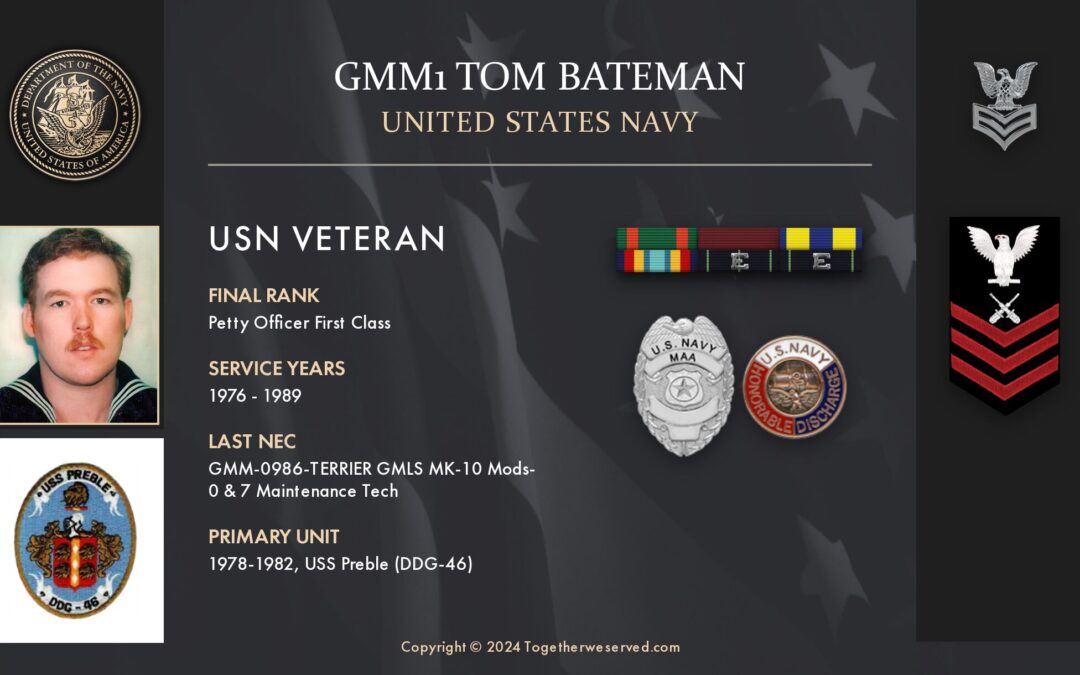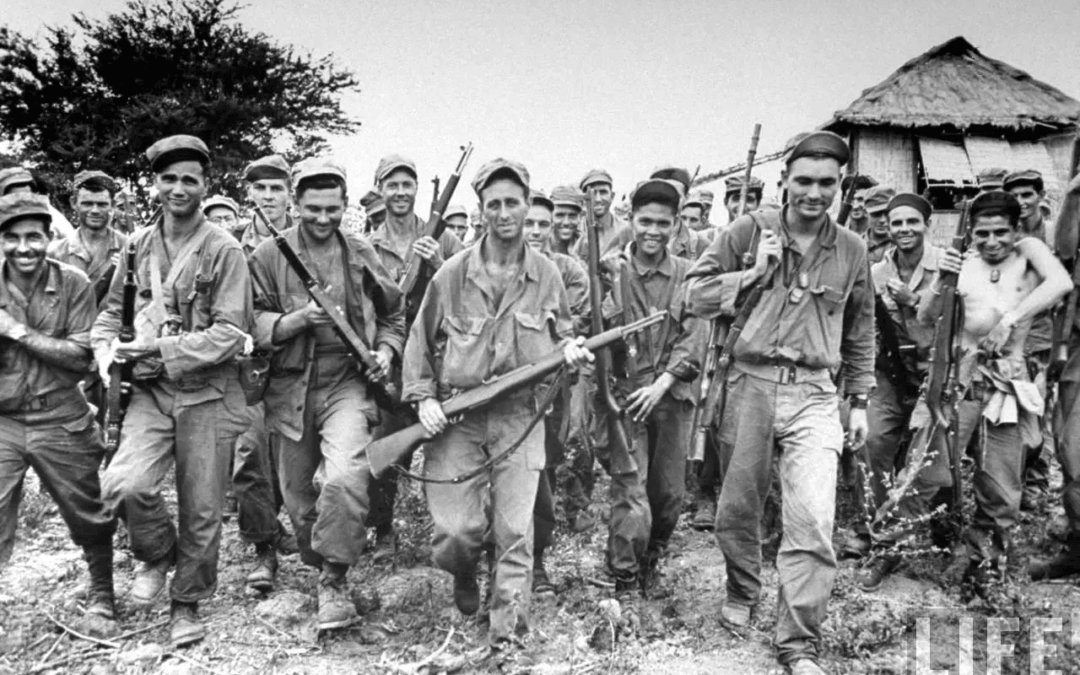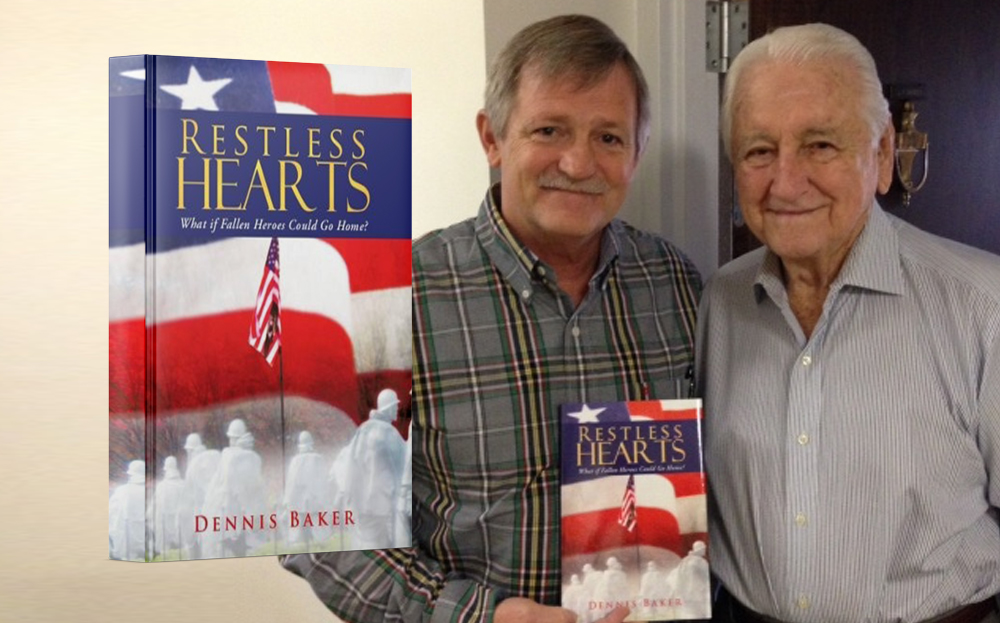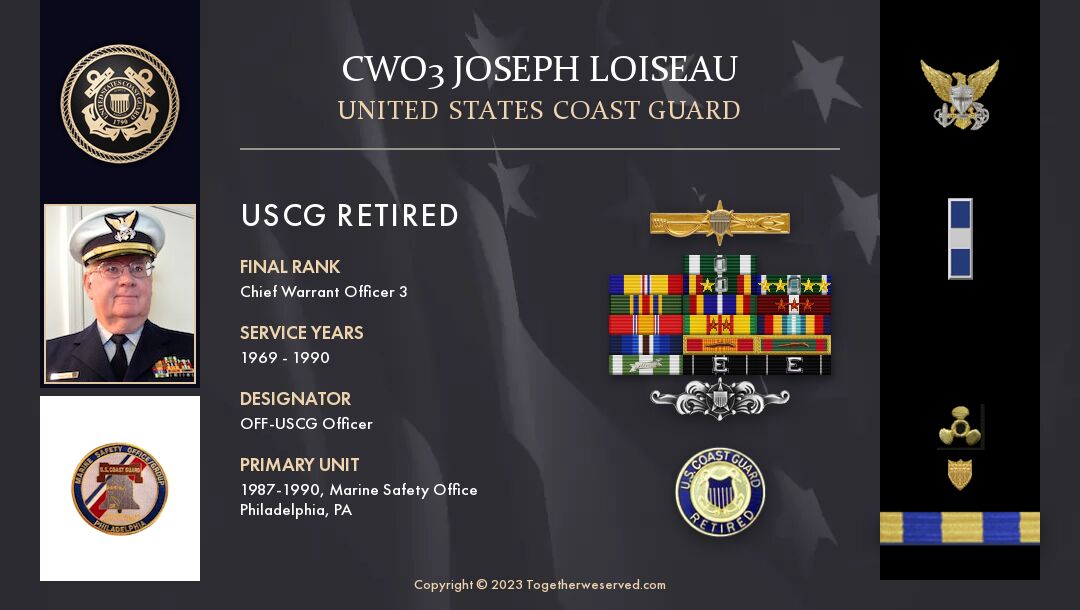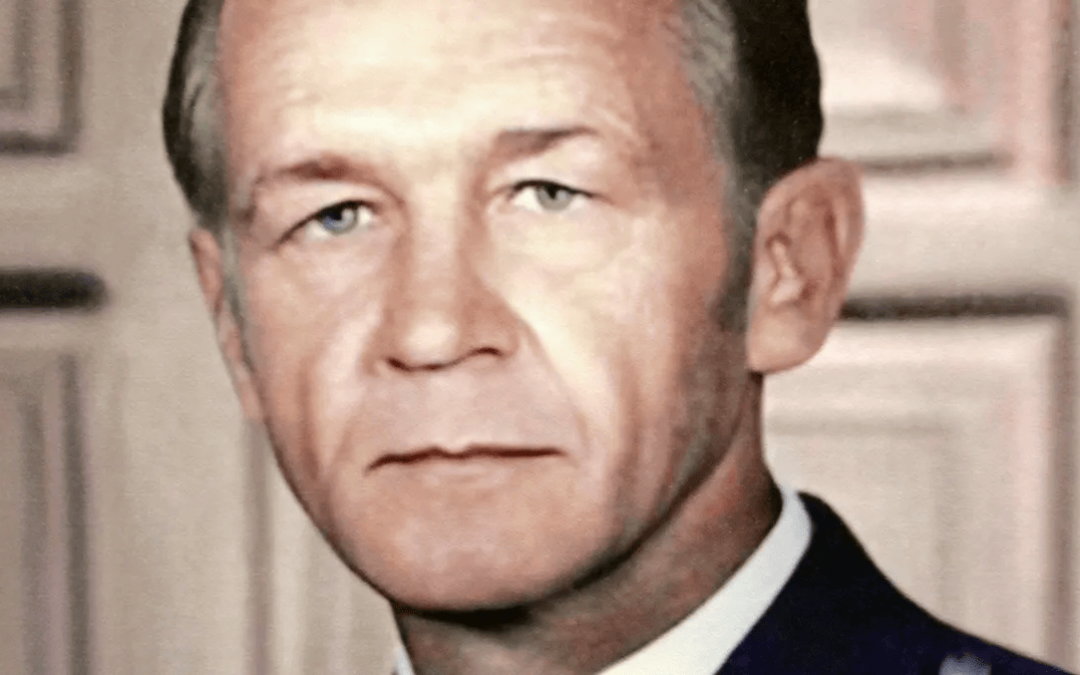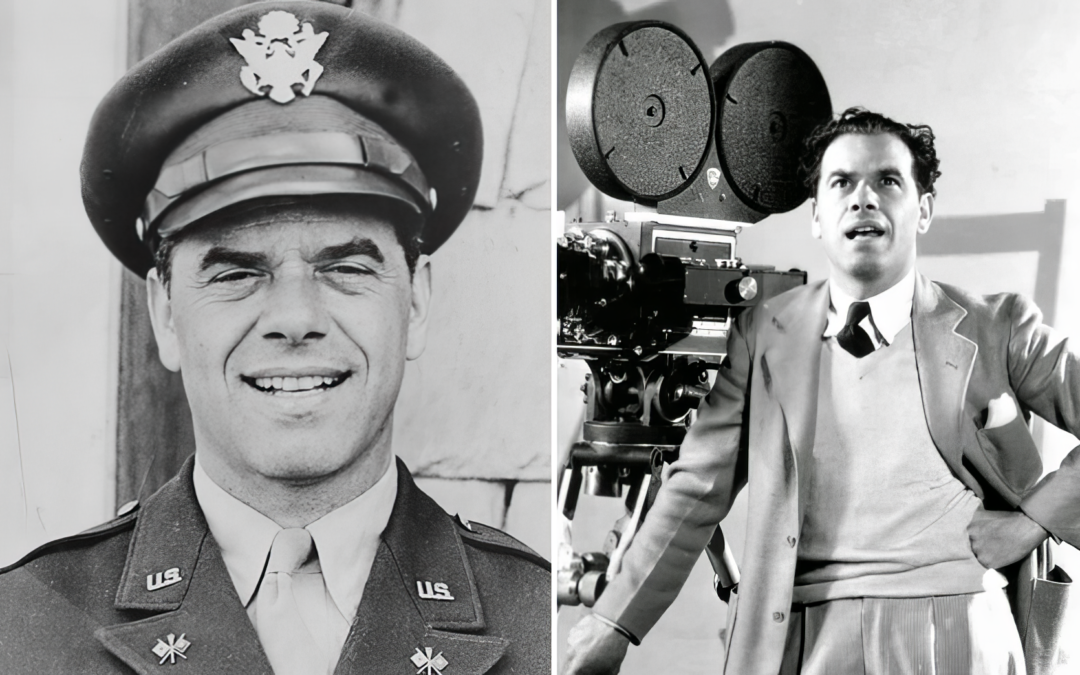I had always wanted to join the military. I was raised on WWII movies, built military models, listened to stories from my uncles and just loved the thought of it. As a child I had thought I would join the Army and I would be a Tanker. I had a pair of army fatigue coveralls that I wore all the time. My Mother said I would only take them off to be washed. Over my teenage years, my uncle Don (EM1 WWII SeaBee) told me about his service in the Navy. That, his love of our country and it’s veterans along with his Civic Pride is what confirmed my choice in military service and steered me from the Army to the Navy.
